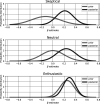Postoperative Cerebral Oxygen Saturation in Children After Congenital Cardiac Surgery and Long-Term Total Intelligence Quotient: A Prospective Observational Study
- PMID: 33591016
- PMCID: PMC8132917
- DOI: 10.1097/CCM.0000000000004852
Postoperative Cerebral Oxygen Saturation in Children After Congenital Cardiac Surgery and Long-Term Total Intelligence Quotient: A Prospective Observational Study
Abstract
Objectives: During the early postoperative period, children with congenital heart disease can suffer from inadequate cerebral perfusion, with possible long-term neurocognitive consequences. Cerebral tissue oxygen saturation can be monitored noninvasively with near-infrared spectroscopy. In this prospective study, we hypothesized that reduced cerebral tissue oxygen saturation and increased intensity and duration of desaturation (defined as cerebral tissue oxygen saturation < 65%) during the early postoperative period, independently increase the probability of reduced total intelligence quotient, 2 years after admission to a PICU.
Design: Single-center, prospective study, performed between 2012 and 2015.
Setting: The PICU of the University Hospitals Leuven, Belgium.
Patients: The study included pediatric patients after surgery for congenital heart disease admitted to the PICU.
Interventions: None.
Measurements and main results: Postoperative cerebral perfusion was characterized with the mean cerebral tissue oxygen saturation and dose of desaturation of the first 12 and 24 hours of cerebral tissue oxygen saturation monitoring. The independent association of postoperative mean cerebral tissue oxygen saturation and dose of desaturation with total intelligence quotient at 2-year follow-up was evaluated with a Bayesian linear regression model adjusted for known confounders. According to a noninformative prior, reduced mean cerebral tissue oxygen saturation during the first 12 hours of monitoring results in a loss of intelligence quotient points at 2 years, with a 90% probability (posterior β estimates [80% credible interval], 0.23 [0.04-0.41]). Similarly, increased dose of cerebral tissue oxygen saturation desaturation would result in a loss of intelligence quotient points at 2 years with a 90% probability (posterior β estimates [80% credible interval], -0.009 [-0.016 to -0.001]).
Conclusions: Increased dose of cerebral tissue oxygen saturation desaturation and reduced mean cerebral tissue oxygen saturation during the early postoperative period independently increase the probability of having a lower total intelligence quotient, 2 years after PICU admission.
Trial registration: ClinicalTrials.gov NCT01706497.
Copyright © 2021 The Author(s). Published by Wolters Kluwer Health, Inc. on behalf of the Society of Critical Care Medicine and Wolters Kluwer Health, Inc.
Conflict of interest statement
Ms. Carra receives funding from the Research Foundation, Flanders (FWO) as a PhD fellow (fellowship number: 1S28120N). Dr. Meyfroidt is supported by the Research Foundation, Flanders (FWO) as senior clinical investigator (1843118N). Drs. Güiza and Meyfroidt receive project funding from the KU Leuven (C2 project [C24/17/072]: a Neuromonitor for the 21st century). Drs. Flechet and Verstraete received funding from the Research Foundation, Flanders (FWO) as PhD fellows (fellowship numbers: 11Y1118N and 11V9215N, respectively). Ms. Carra and Dr. Meyfroidt received a PhD fellowship from the FWO (Belgium). The remaining authors have disclosed that they do not have any potential conflicts of interest.
Figures



Similar articles
-
Near-Infrared Cerebral Oximetry to Predict Outcome After Pediatric Cardiac Surgery: A Prospective Observational Study.Pediatr Crit Care Med. 2018 May;19(5):433-441. doi: 10.1097/PCC.0000000000001495. Pediatr Crit Care Med. 2018. PMID: 29465631
-
Effects of Hypothermic Cardiopulmonary Bypass on Internal Jugular Bulb Venous Oxygen Saturation, Cerebral Oxygen Saturation, and Bispectral Index in Pediatric Patients Undergoing Cardiac Surgery: A Prospective Study.Medicine (Baltimore). 2016 Jan;95(2):e2483. doi: 10.1097/MD.0000000000002483. Medicine (Baltimore). 2016. PMID: 26765454 Free PMC article. Clinical Trial.
-
Postoperative cerebral oxygenation was not associated with new brain injury in infants with congenital heart disease.J Thorac Cardiovasc Surg. 2019 Sep;158(3):867-877.e1. doi: 10.1016/j.jtcvs.2019.02.106. Epub 2019 Mar 14. J Thorac Cardiovasc Surg. 2019. PMID: 30982585
-
Regional and central venous oxygen saturation monitoring following pediatric cardiac surgery: concordance and association with clinical variables.Pediatr Crit Care Med. 2007 Mar;8(2):154-60. doi: 10.1097/01.PCC.0000257101.37171.BE. Pediatr Crit Care Med. 2007. PMID: 17273125
-
A comprehensive review of cerebral oximetry in cardiac surgery.J Card Surg. 2022 Dec;37(12):5418-5433. doi: 10.1111/jocs.17232. Epub 2022 Nov 24. J Card Surg. 2022. PMID: 36423259 Review.
Cited by
-
Combined cerebral and somatic near-infrared spectroscopy oximetry monitoring during liver surgery: an observational and non-interventional study.Korean J Anesthesiol. 2022 Oct;75(5):371-390. doi: 10.4097/kja.21414. Epub 2022 Jan 20. Korean J Anesthesiol. 2022. PMID: 35045594 Free PMC article.
-
Utilizing mesenteric near-infrared reflectance spectroscopy to predict gastrointestinal complication risks and optimize feeding strategies in infants undergoing cardiac surgery.Pediatr Investig. 2024 Jun 27;8(4):287-294. doi: 10.1002/ped4.12437. eCollection 2024 Dec. Pediatr Investig. 2024. PMID: 39720283 Free PMC article.
-
Effect of Optimizing Regional Cerebral Oxygen Saturation during Infant Cardiac Surgery on the Incidence of Postoperative Delirium: A Retrospective Study.Ann Thorac Cardiovasc Surg. 2024 Jan 25;30(1):23-00057. doi: 10.5761/atcs.oa.23-00057. Epub 2023 Jul 1. Ann Thorac Cardiovasc Surg. 2024. PMID: 37394498 Free PMC article.
-
Comparison of cerebral oxygen saturation values determined by time-resolved spectroscopy and spatially resolved spectroscopy in pediatric patients with congenital heart disease.J Anesth. 2025 Jul 11. doi: 10.1007/s00540-025-03545-3. Online ahead of print. J Anesth. 2025. PMID: 40643614
-
Neuromonitoring modalities predicting neurological impairment in pediatric congenital heart disease: a systematic review.Front Neurol. 2024 Dec 18;15:1502762. doi: 10.3389/fneur.2024.1502762. eCollection 2024. Front Neurol. 2024. PMID: 39744107 Free PMC article.
References
-
- Hoffman JI, Kaplan S. The incidence of congenital heart disease. J Am Coll Cardiol. 2002; 39:1890–1900 - PubMed
-
- Glass TJA, Seed M, Chau V: Chapter 15 - Congenital Heart Disease: An Important Cause of Brain Injury and Dysmaturation. Third Edition. Elsevier Inc.; 2019
-
- Galli KK, Zimmerman RA, Jarvik GP, et al. . Periventricular leukomalacia is common after neonatal cardiac surgery. J Thorac Cardiovasc Surg. 2004; 127:692–704 - PubMed
-
- Bellinger DC, Wypij D, Kuban KC, et al. . Developmental and neurological status of children at 4 years of age after heart surgery with hypothermic circulatory arrest or low-flow cardiopulmonary bypass. Circulation. 1999; 100:526–532 - PubMed
-
- Majnemer A, Limperopoulos C. Developmental progress of children with congenital heart defects requiring open heart surgery. Semin Pediatr Neurol. 1999; 6:12–19 - PubMed
Publication types
MeSH terms
Substances
Associated data
LinkOut - more resources
Full Text Sources
Other Literature Sources
Medical

